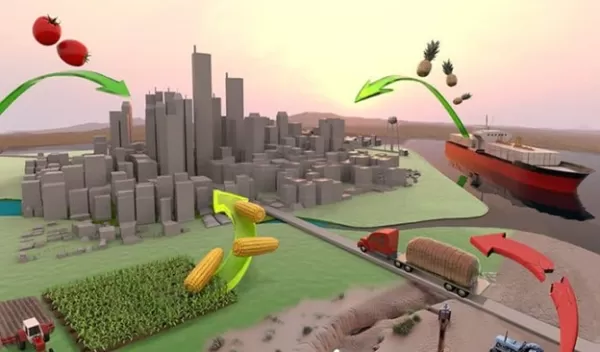
Making cities naturally safe from supply chain shocks
A new paper published in Nature lays out the way natural ecosystems parallel U.S. supply chains and how American cities can use the information to strengthen supply chains.
The paper is co-authored by Benjamin Ruddell, director of the FEWSION Project at Northern Arizona University and colleagues. FEWSION is a U.S. National Science Foundation-funded collaboration that uses comprehensive data mapping to monitor domestic supply chains with an emphasis on food, energy and water down to the county level.
Manish Parashar, director of NSF's Office of Advanced Cyberinfrastructure, said that the project "is a good example of an NSF research investment: a multidisciplinary, multi-university team combining research in data science, nature-inspired design and scientific visualization with education, to address an important and timely question that can enhance the resilience of U.S. supply chain policy."
The research looks at the importance of diversity within the supply chain, which helps to reduce damaging disruptions from supply chain shocks. Supply chains work a lot like food webs in natural ecosystems, in which biodiversity allows for adaptation during disruptions. The analogy turned out to be very insightful, said Ruddell, particularly in looking at "black swan" events, which are unpredictable and hard to protect against -- and for which adaptation, not prevention, is the main defense.
"This is why ecological theory is so important -- if we have diverse supply chains that mimic ecological systems, they can more readily adapt to unforeseeable shocks," Ruddell said. "We can use this nature-inspired design to create more resilient supply chains."
The study examined a history of food flow data of U.S. cities, questioning whether the diversity of a city's food supply chain explains the resilience of the city's food supply to shocks. The results show that the diversity of a city's supply chain explains more than 90% of the intensity, duration and frequency of historically observed food supply shocks in U.S. cities.
The model worked regardless of the cause of the shock, which Ruddell said is both profound and practical.
"We now have a simple and effective mathematical basis for policies to boost a city's supply chain resilience," he said. "Coming years will reveal how broadly this finding holds for other kinds of supply chains. Does it hold for households? Nations? Electricity? Telecommunications?"


